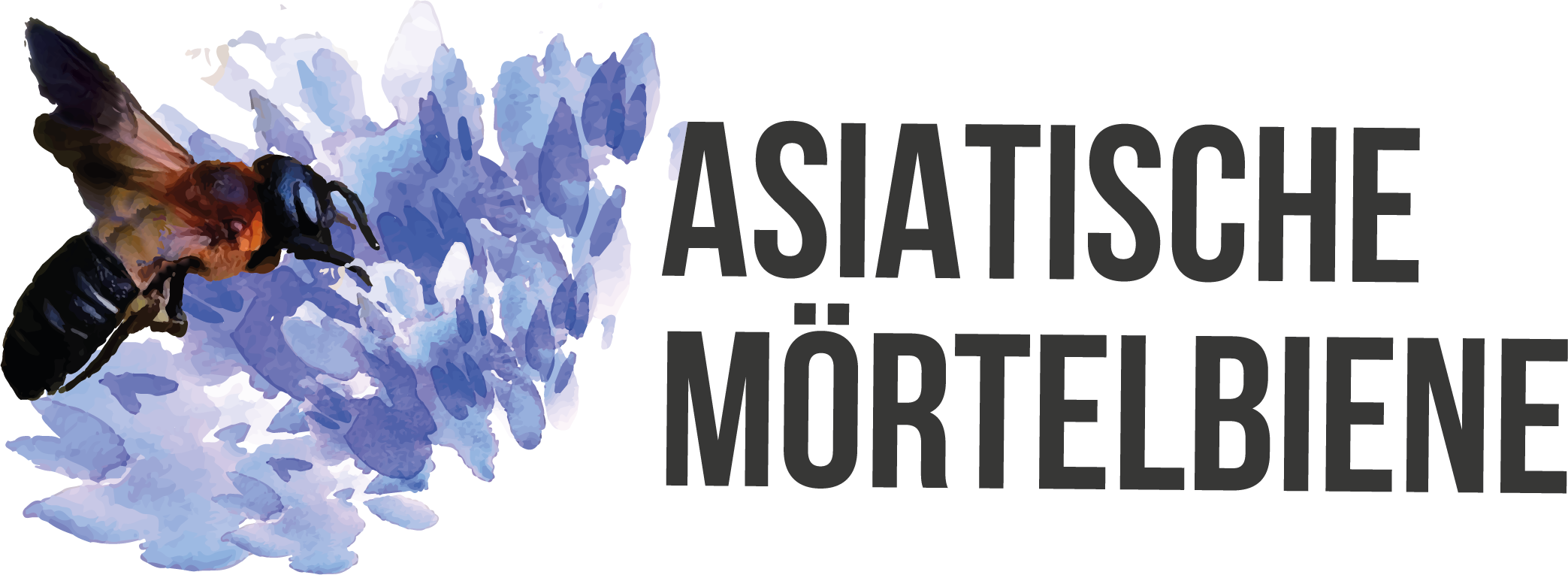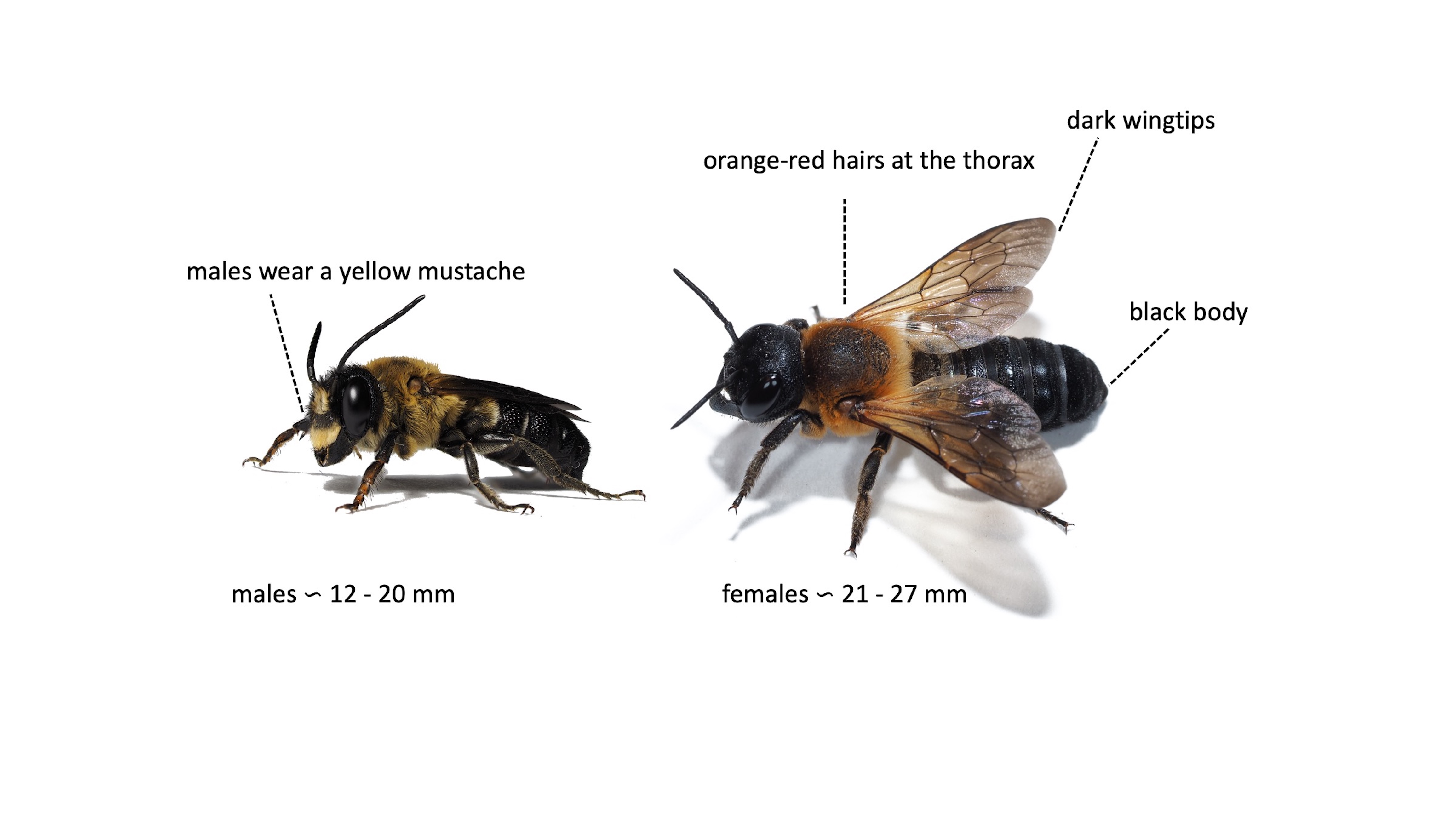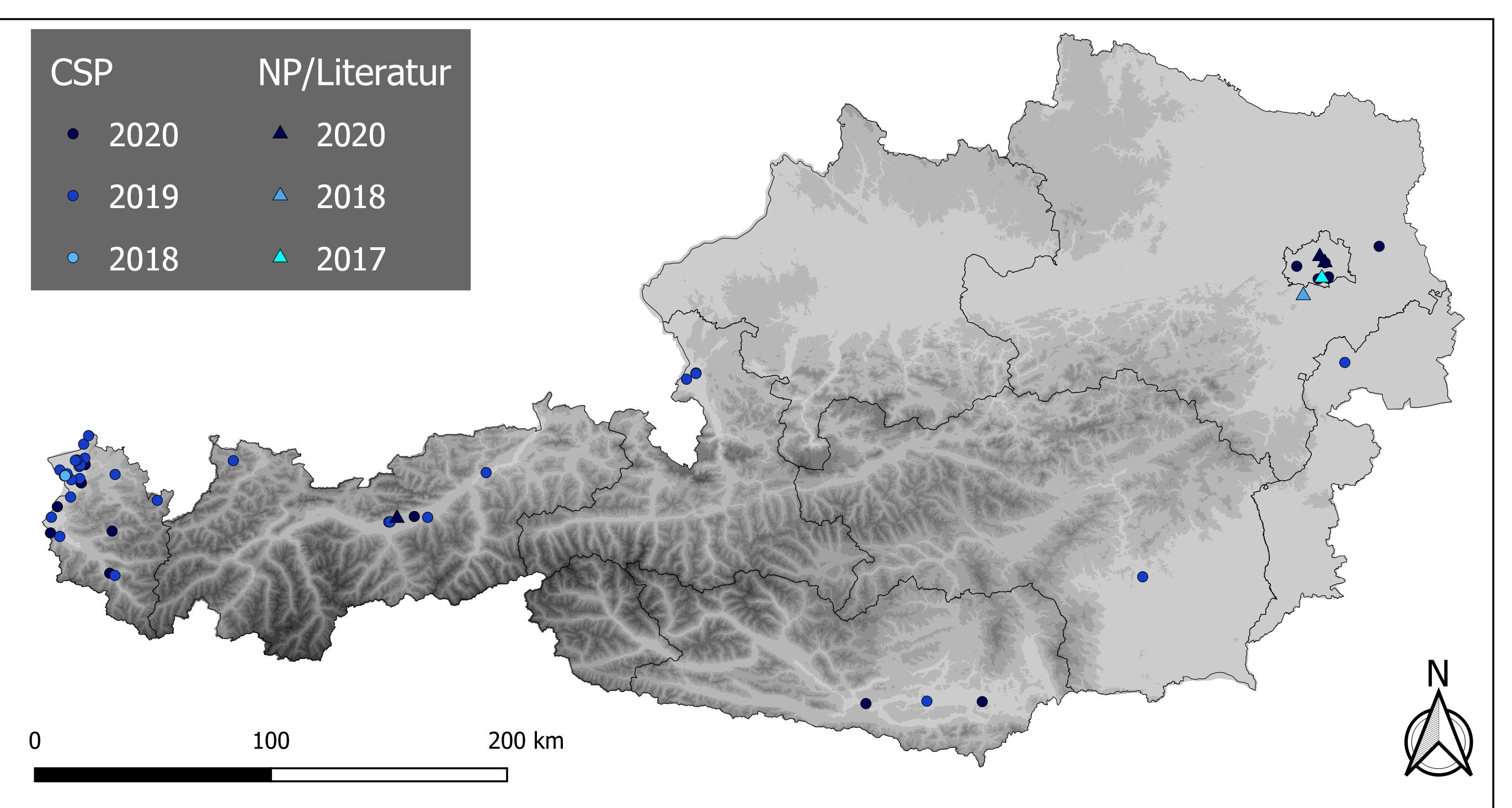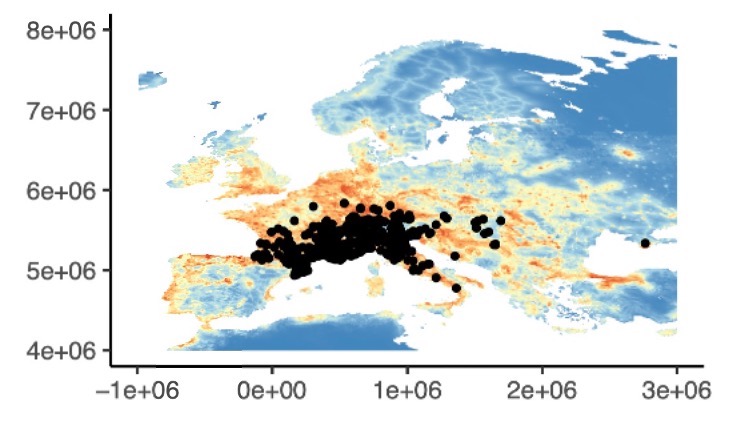
Technikerstrasse 25
6020 Innsbruck
BeeRadar
We are tracing the Sculptured Resin Bee!
Home of the Sculptured Resin Bee (Megachile sculpturalis, Smith 1853) is far away in Japan, China, Korea and Taiwan. In 2008, the Sculptured Resin Bee was discovered in southern France as the first introduced wild bee species in Europe. Since then, the bee has been particularly active and dispersed rapidly throughout Europe. Together, we track down the Sculptured Resin Bee in Austria.
Report your observations via email at This email address is being protected from spambots. You need JavaScript enabled to view it. or on Instagram.

You can also scan this QR-Code to go directly to the website:
The look of the Asian bee is remarkable
The sculptured resin bee has a unique appearance:

© Felix Fornoff 2020
Where you can find the Sculptured Resin Bee
The sculptured resin bee nests in cavities in dead wood. They often inhabit artificial nesting sites, so-called "bee hotels". There, the females build nests and take care of their offspring. Such aids are necessary since it cannot drill holes in the wood on its own, even though the body size and powerful jaws might lead you to believe otherwise.
https://www.citizen-science.at/en/projects/the-giant-resin-bee#sigProIddb4e59b282
Females prefer to collect pollen from exotic plants, which were frequently introduced in Central Europe as ornamental trees and shrubs. These ornamental plants decorate gardens and parks, such as the Japanese pagoda tree (Styphnolobium japonicum). As source of nectar, the sculptured resin bee often seeks out lavender or wisteria. Males of the Sculptured Resin Bee emerge earlier than females in the End of June until mid-July. Females appear a few weeks later and are active until about mid-September.
https://www.citizen-science.at/en/projects/the-giant-resin-bee#sigProIdbf4d44bd56
Introduced is not invasive
The sculptured resin bee is the first and so far, only invasive wild bee in Europe.
Citizen Scientists of this particular project provided important insights into the competitive behavior against native bees. Participants reported observations where females of the sculptured resin bee were evacuating preoccupied nests of native bees. Once they cleared out larvae and pupae, these females used the nests for their own offspring. Based on these observations combined with a recent study from France, the sculptured resin bee has to be considered as an invasive species.
Not every introduced species is per se a severe threat for native biodiversity. Every new species needs to be monitored closely in terms of potential consequences for its new environment. But if negative impacts are observable, the species must be considered as invasive.
Project aims
The monitoring program aims to locate the sculptured resin bee in Europe. We examine its rapid dispersal behavior, investigate its preferences in regard to plant and nesting site selection and to reconstruct its colonization history.
Additionally, we take a closer look at the genetics of the sculptured resin bee. With these lab studies we examine the bee’s immigration history. Based on our international network of experts, we aim answer various research questions like which microbiota colonizes the bee.
For more information, please watch our short clip:
This project also aims to sensitize the participants to the local fauna and get aware of wild bees and their protection. The citizen scientists get a feeling for the possible effects of intentionally and unintentionally introduced and invasive species. A new point of view is presented to the participants in regard to artificial nests and active interventions in ecological systems. Participants will be informed how simple actions can be taken to support wild bees and other insects. They will also become part of scientific processes and gain insight into research processes.
Our published results
Within the last few years, we studied the invasive bee together with our participants. We published the results in scientific articles by choosing Open Access Journals.
2020
The first results of the initiated citizen science monitoring program were published in 2020. Within only two years after starting the project, 111 new reports from Switzerland, Liechtenstein and Austria were recorded. The population progressed remarkably fast from year to year expanding its region geographically, but also ecologically. The distribution pattern indicates that Austria is situated in a rather young invasion stage so far. The article can be found here.
2021
We performed population genetic analyses including specimens collected in the framework of a citizen science project. The aim was to study the colonization history and investigate the degree of connectivity between bees across Europe. We detected multiple, independent introduction events of the species to the European continent. This article can be found here.
For us, it was a special pleasure to publish an article describing the distribution of the invasive bee in Austria together with a Citizen Scientist. For the journal „Beiträge zur Entomofaunistik“ we introduced the sculptured resin bee as a new bee species for Austria. To read this article, you can click here (German).
 Spread of M. sculpturalis in Austria (2017-2020) © Lanner & Meyer 2020
Spread of M. sculpturalis in Austria (2017-2020) © Lanner & Meyer 2020
In a review published in the journal BeeWorld, we describe the main characteristics of the sculptured resin bee, its life cycle and its current distribution in colonised regions. We discuss possible ecological impacts on native bees. We also explore the role of beekeepers in monitoring projects and argue why they are valuable participants in citizen science projects.
The review is accessible here.
2022
BeeRadar launched an international study consisting of 19 authors from all over the world: USA, China, France, Italy, Serbia, and Austria. Using complex model calculations (species distribution modelling), we identified regions that are colonised by the sculptured resin bee, and influencing factors for its spread. Most of the data was collected with the support of the public. Man-made landscape structures, such as road networks, settlements and ports and airports, facilitate the spread of the Sculptured Resin bee. Click here for the article.

Even though citizen science has its momentum in many western regions, it is a less explored research practice in Eastern Europe. Together with our colleagues from the University of Belgrade, we initiated a first ecological-focused citizen science project in Serbia. We present the currently known distribution of the sculptured resin bee in the Balkans and discuss the potential and challenges of participatory research and intercultural science communication in Eastern Europe.

Podcast episode
Project leader Julia Lanner was a guest on an episode of the Österreich forscht podcast "Wissen macht Leute" in August 2022 - anyone interested in learning more about the project can listen to the episode here (in German).
Citizen Science Seminar
In 2021, poject coordinator Julia Lanner held a lecture about BeeRadar as part of the lecture series "Citizen Science Seminar" at the University of Natural Resources and Life Sciences Vienna (BOKU): "The making of 'Wanted - Asiatische Mörtelbiene'" (in German). At the end of this page you can watch the video recording of the lecture.
Project partners
- Inatura Erlebnis Naturschau GmbH
- Entomologische Verein Bern
- Naturschutzbund Österreich
- Naturbeobachtung.at
- Pollinature Beehome
This project fulfils version 1.1 of the quality criteria for citizen science projects on Österreich forscht.
- animals


